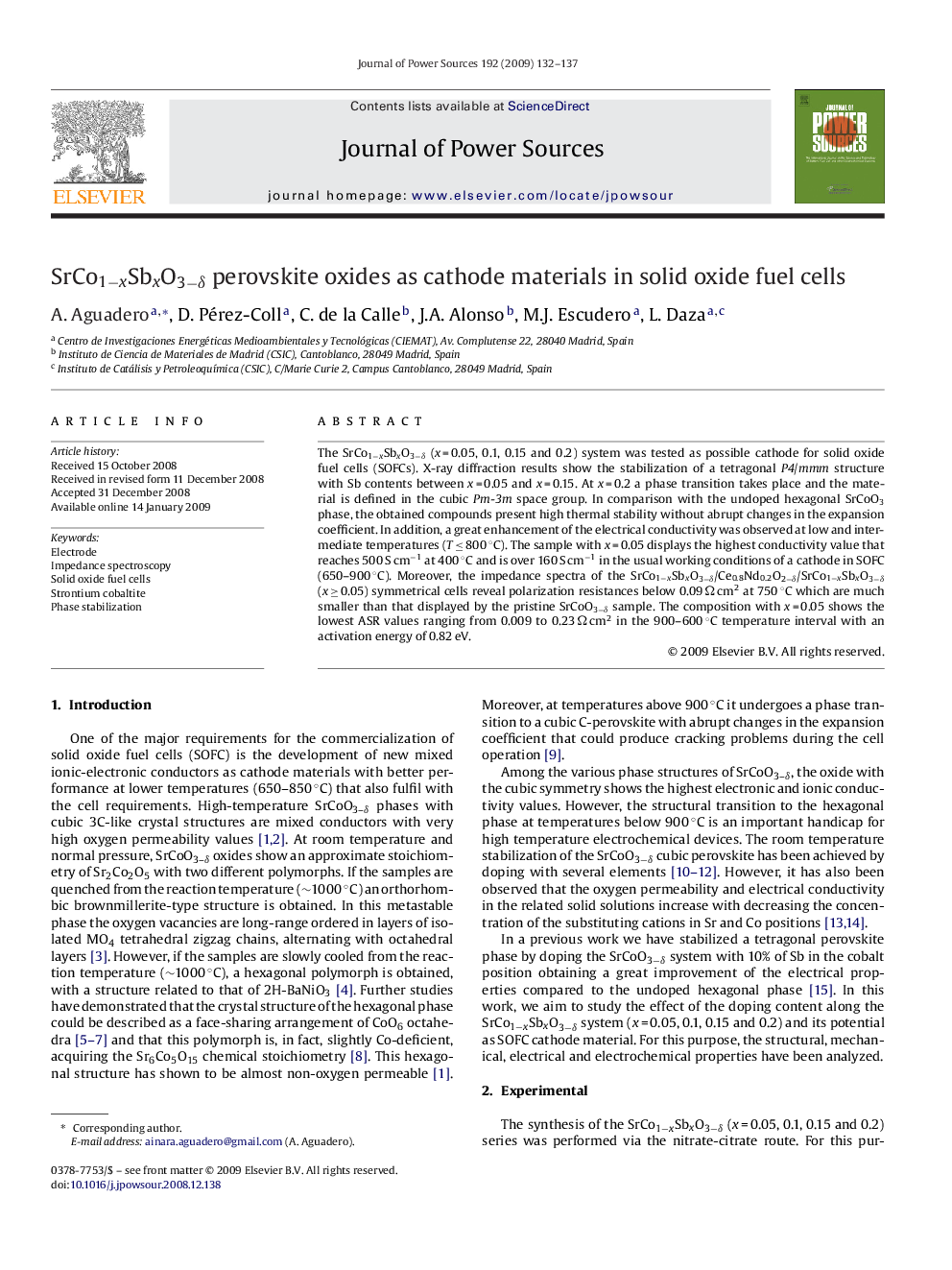| Article ID | Journal | Published Year | Pages | File Type |
|---|---|---|---|---|
| 1294208 | Journal of Power Sources | 2009 | 6 Pages |
The SrCo1−xSbxO3−δ (x = 0.05, 0.1, 0.15 and 0.2) system was tested as possible cathode for solid oxide fuel cells (SOFCs). X-ray diffraction results show the stabilization of a tetragonal P4/mmm structure with Sb contents between x = 0.05 and x = 0.15. At x = 0.2 a phase transition takes place and the material is defined in the cubic Pm-3m space group. In comparison with the undoped hexagonal SrCoO3 phase, the obtained compounds present high thermal stability without abrupt changes in the expansion coefficient. In addition, a great enhancement of the electrical conductivity was observed at low and intermediate temperatures (T ≤ 800 °C). The sample with x = 0.05 displays the highest conductivity value that reaches 500 S cm−1 at 400 °C and is over 160 S cm−1 in the usual working conditions of a cathode in SOFC (650–900 °C). Moreover, the impedance spectra of the SrCo1−xSbxO3−δ/Ce0.8Nd0.2O2−δ/SrCo1−xSbxO3−δ (x ≥ 0.05) symmetrical cells reveal polarization resistances below 0.09 Ω cm2 at 750 °C which are much smaller than that displayed by the pristine SrCoO3−δ sample. The composition with x = 0.05 shows the lowest ASR values ranging from 0.009 to 0.23 Ω cm2 in the 900–600 °C temperature interval with an activation energy of 0.82 eV.
